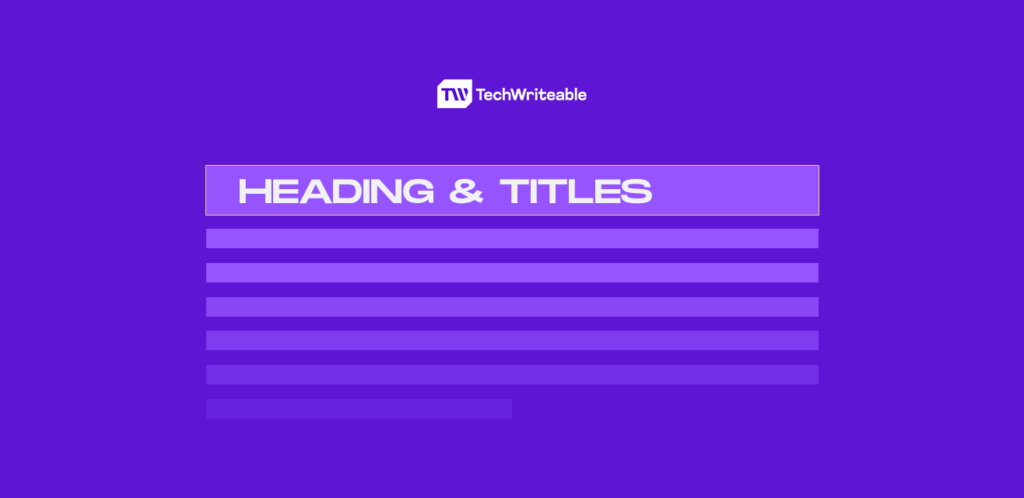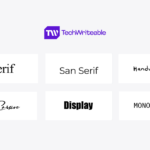New writers need all the help they can get to compete with the expert writers and their vast readership. You need something that sets you apart to get a part of the readership. And that is writing addictive titles and headers. The titles and headers of your tech content are the first weapon in the war to get people to notice your article.
Writing addictive titles and headers requires you to deeply understand what your readers want and how they want that information presented. You also have to write to appeal to the curious side of human nature. Your titles must demonstrate a clear value proposition. It must reflect the reader’s mind and promise an answer to their questions.
This article will explore the strategies and principles of writing addictive titles and headers for your tech content. Some of the techniques that will be explored include the 3Cs of addictive titles, Search Engine Optimization, and the use of software tools.
7 Steps to Writing Addictive Titles and Headers for Your Tech Content
If you’re looking for a masterclass on writing compelling titles and headers, you’ve come to the right place.
1. Know Your Audience
To understand your audience, you should ask yourself: Which class of readers are interested in my topic? Are they tech enthusiasts, product managers, product owners, software engineers, data analysts, or newbies looking for an introduction to tech? You should not only know who they are. But also the language they speak, their level of experience, their pain points, and what they expect to see from you.
The answer to that question solves many of your problems. If you’re writing for newbies, you don’t want to include technical terms and concepts they don’t understand. But for enthusiasts and experienced audiences, a technical term here and there proves that you know your stuff and are a credible source of information.
Additionally, tech enthusiasts and product owners already have experience and seek unique information or additional coding knowledge. Your titles and headers should reflect this hunger or promise to solve their thirst for knowledge.
Tech newbies seek fundamental knowledge or a pathway to starting their tech journey. So, your titles should be “a guide to” or “comprehensive” knowledge inspiring them on their journey.
2. Generate Your Ideas
Ideas are the soul of content, and your title and header must reflect the depth of your ideas. If you need inspiration, there are many techniques for generating captivating ideas. Some of them are:
- Check the internet: Visit authoritative websites for ideas or inspiration. Your best bets would be popular tech platforms like Capterra and Softwaresuggest. Other platforms like cosmopolitan.com have a history of writing captivating titles and headers.
- Crowdsourcing through collaborations: another technique is crowdsourcing or remote brainstorming sessions with writers on your team.
- Use software tools: Several tools can help you optimize your title suggestions to fit your audience’s tastes. Some include Grammarly and Guru, a collaboration and knowledge management software.
3. Build Curiosity with Questions
The human mind is wired to be curious, so most searches are asked in the question format. You will have a better chance of crafting your ideal titles and headers if you write them in the question format. The title of this article is written in question format for this reason.
Additionally, writing to answer questions makes it easy for your content to appear on Google’s featured snippet pages, giving you more visibility.
4. The 3Cs (Concise, Clear, Conversational)
The 3Cs are the golden rule of writing addictive titles and headers for your tech content.
- Concise: You don’t have all the time in the world to convince your readers to read your content. Your title and header must be short enough to explain the content adequately. A long title will be cut short by search engines and turn off your audience’s interest. Also, articles with short titles have more chances of being clicked than ones with long titles.
- Clear: Be clear about the value proposition. Let the readers know exactly what they will find in the article. The best example of this type of tech content is “PerformYard Review: Features, Integrations, and Pricing 2024.” From the title, you can already tell what the article is about and the information it contains. A reader who needs such information will click it without hesitation because it shows a clear value proposition.
- Conversational: When crafting a title or header, it is essential to use everyday grammar. Tap into your reader’s expectations; be friendly, kind, and humble. Use assertive language without sounding pompous. An important tip to achieve the conversational tone is to always write for humans and in a way you would talk to a friend.
5. Test and Refine Your Headers and Titles
The art of crafting addictive titles and headers does not stop when you have a title for your content. You must test title variations to determine which resonates with your audience. A/B testing helps you compare the impact each title and header will have on the success of your tech content. You can use content analysis software like WordPress’s Yoast plugin, Ahrefs, and Hubspot to test the suitability of your chosen title and header.
6. Avoid Clickbaity Traps
Clickbait titles are good for getting many clicks on your title, but they will damage the credibility of your content. Another disadvantage of clickbait is that it misrepresents your article’s content and can damage your publication’s authority. Tapping into human curiosity to drive attention and engagement is better.
Accurate titles will help you build authority and a loyal audience base. If you set high expectations in your title, you must deliver it in the content or risk the reader’s dissatisfaction.
7. Optimize for Search Engine
Writing addictive titles and headers means you’re writing to capture attention. There’s no better way to get that attention than to optimize the titles for search engines like Google and Yahoo. Some of the best practices for optimizing for search engines are:
- Your title must be short. Google recommends short titles. If your blog title is long, the search engine will cut it short, affecting visibility on search engine result pages (SERPs).
- The keyword should be in the beginning: SEO best practice is to place your keyword at the beginning of your title. This makes it easy for readers to know if your content contains what they need.
- Make sure it is human: optimizing for search engines is essential, but it should not be at the expense of your readers. Optimize for humans before optimizing for Google bots. Also, ensure the title contains all relevant information the reader needs to decide.
- Be clear: Your chosen title and header must demonstrate a value proposition. The title can rank on search engine result pages (SERPs) if the title is clear and represents the article. If you need help optimizing your title for search engines, Zupyak is an SEO tool that can help you rank well on SERPs.
FAQ
1. Why are titles and headers important in tech content?
Titles and headers are your first weapon in capturing your audience’s attention. They help you stand out from other blog posts in your niche.
2. What common mistakes should I avoid while writing my titles and headers?
The common mistakes you should avoid are:
- Clickbait titles
- Making your titles and headers too long
- Vague titles and headers
These mistakes can damage your publication authority.
3. How can I test the effectiveness of my titles and headers?
The best way to test the effectiveness of your titles and headers is through brainstorming sessions with your team. You can also use tools like Hubspot, Ahrefs, the WordPress Yoast SEO plugin, and Zupyak.
Conclusion
Mastering the steps in this blog post will give your content a headstart in the ever-changing tech space. Knowing your audience is the first step in the process. Then, you can build on that knowledge by sharing ideas and collaborating with your team. The goal is to ensure the titles are impactful for the readers.
Learning how to write addictive titles and headers is a never-ending process. So, you must test and refine your titles to stay competitive in the tech content space.
To learn more about writing for the tech space, join the TechWriteable community for mentorship and expert advice.
In this article.
- 7 Steps to Writing Addictive Titles and Headers for Your Tech Content
- 1. Know Your Audience
- 2. Generate Your Ideas
- 3. Build Curiosity with Questions
- 4. The 3Cs (Concise, Clear, Conversational)
- 5. Test and Refine Your Headers and Titles
- 6. Avoid Clickbaity Traps
- 7. Optimize for Search Engine
- FAQ
- Conclusion



